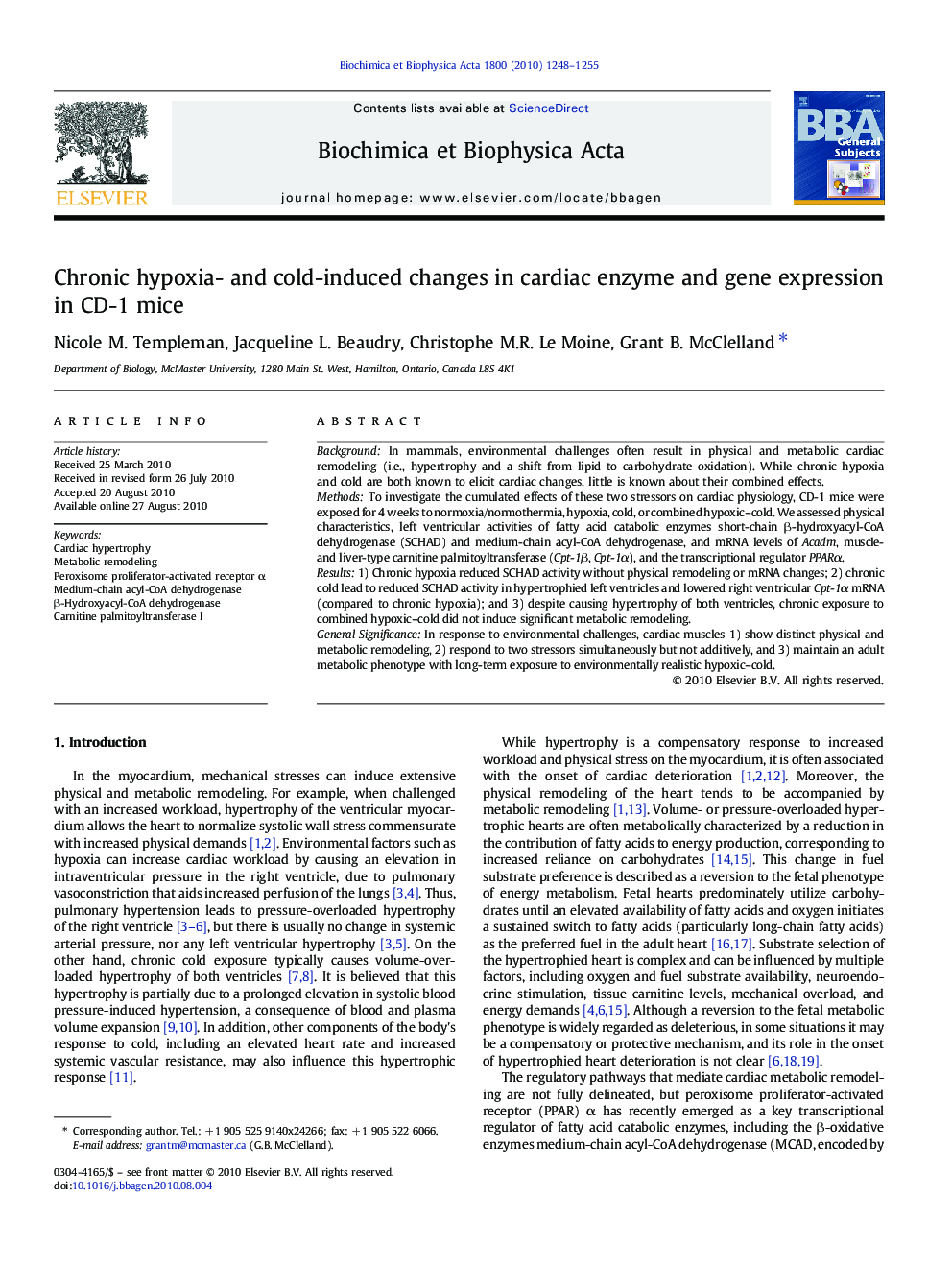| Article ID | Journal | Published Year | Pages | File Type |
|---|---|---|---|---|
| 1947984 | Biochimica et Biophysica Acta (BBA) - General Subjects | 2010 | 8 Pages |
BackgroundIn mammals, environmental challenges often result in physical and metabolic cardiac remodeling (i.e., hypertrophy and a shift from lipid to carbohydrate oxidation). While chronic hypoxia and cold are both known to elicit cardiac changes, little is known about their combined effects.MethodsTo investigate the cumulated effects of these two stressors on cardiac physiology, CD-1 mice were exposed for 4 weeks to normoxia/normothermia, hypoxia, cold, or combined hypoxic–cold. We assessed physical characteristics, left ventricular activities of fatty acid catabolic enzymes short-chain β-hydroxyacyl-CoA dehydrogenase (SCHAD) and medium-chain acyl-CoA dehydrogenase, and mRNA levels of Acadm, muscle- and liver-type carnitine palmitoyltransferase (Cpt-1β, Cpt-1α), and the transcriptional regulator PPARα.Results1) Chronic hypoxia reduced SCHAD activity without physical remodeling or mRNA changes; 2) chronic cold lead to reduced SCHAD activity in hypertrophied left ventricles and lowered right ventricular Cpt-1α mRNA (compared to chronic hypoxia); and 3) despite causing hypertrophy of both ventricles, chronic exposure to combined hypoxic–cold did not induce significant metabolic remodeling.General SignificanceIn response to environmental challenges, cardiac muscles 1) show distinct physical and metabolic remodeling, 2) respond to two stressors simultaneously but not additively, and 3) maintain an adult metabolic phenotype with long-term exposure to environmentally realistic hypoxic–cold.
